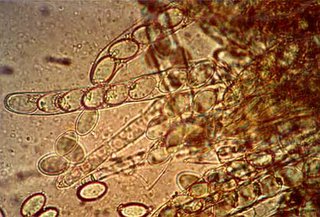Sustainable, "Green" History Museums: The Lviv, Ukraine History Museum Hosts The Gomel [Homel], Belarus National Science Museum Microbiology Project
This winter, the Lviv History Museum -- housed, in part, in the former Renaissance- era Polish Royal Chambers (part of the UNESCO World Heritage Site central core of Lviv, Ukraine) -- hosts a temporary exhibition, from the National Museum of Science, Gomel [Homel], Belarus, featuring 36 microscopes, in a circle in a darkened room, showing spectacular images from our microscopic world. The exhibition is reported to be attracting large numbers of -- especially younger -- visitors to the Lviv History Museum.
Gomel [Homel]-- situated in the southeast corner of Belarus -- is the second largest city in Belarus, after Minsk, and, as the closest urban area to the site of the Chornobyl, Ukraine former nuclear power plant, it, and its surrounding countryside, received the greatest levels of radioactive exposure from the April 26, 1986 Soviet Union disaster.
Please see Chernobyl Children's Project International and "Chernobyl: Twenty Years, Twenty Lives" for preview information on the upcoming 20th anniversary commemoration of this key event in twentieth century world technological and political history.
"Chernobyl: Twenty Years, Twenty Lives" is EarthVision's photo journalistic journey through the countries of the Ukraine, Belarus, Russia, Latvia, Sweden, France, and UK. It follows twenty people in their daily lives nowadays and reflects on how they changed after the events of April 1986. The goal of the project is to learn from the history and look at the accident from the present perspective at different levels, both locally and globally. All twenty stories will be released April 2006.
www.chernobyl-international.org/2020.html
www.earth-vision.biz/20lives/

Spores, known as ascospores, from a mature Morel mushroom, as seen under a microscope. These spores measure twelve to twenty-two microns. There are about 25,000 microns in one inch.
Image credit: © 2001 C. Wayne Ellett and The Ohio State University
http://plantpath.osu.edu/faculty/ellett/microscopic.html
Gomel [Homel]-- situated in the southeast corner of Belarus -- is the second largest city in Belarus, after Minsk, and, as the closest urban area to the site of the Chornobyl, Ukraine former nuclear power plant, it, and its surrounding countryside, received the greatest levels of radioactive exposure from the April 26, 1986 Soviet Union disaster.
Please see Chernobyl Children's Project International and "Chernobyl: Twenty Years, Twenty Lives" for preview information on the upcoming 20th anniversary commemoration of this key event in twentieth century world technological and political history.
"Chernobyl: Twenty Years, Twenty Lives" is EarthVision's photo journalistic journey through the countries of the Ukraine, Belarus, Russia, Latvia, Sweden, France, and UK. It follows twenty people in their daily lives nowadays and reflects on how they changed after the events of April 1986. The goal of the project is to learn from the history and look at the accident from the present perspective at different levels, both locally and globally. All twenty stories will be released April 2006.
www.chernobyl-international.org/2020.html
www.earth-vision.biz/20lives/

Spores, known as ascospores, from a mature Morel mushroom, as seen under a microscope. These spores measure twelve to twenty-two microns. There are about 25,000 microns in one inch.
Image credit: © 2001 C. Wayne Ellett and The Ohio State University
http://plantpath.osu.edu/faculty/ellett/microscopic.html


0 Comments:
Post a Comment
<< Home